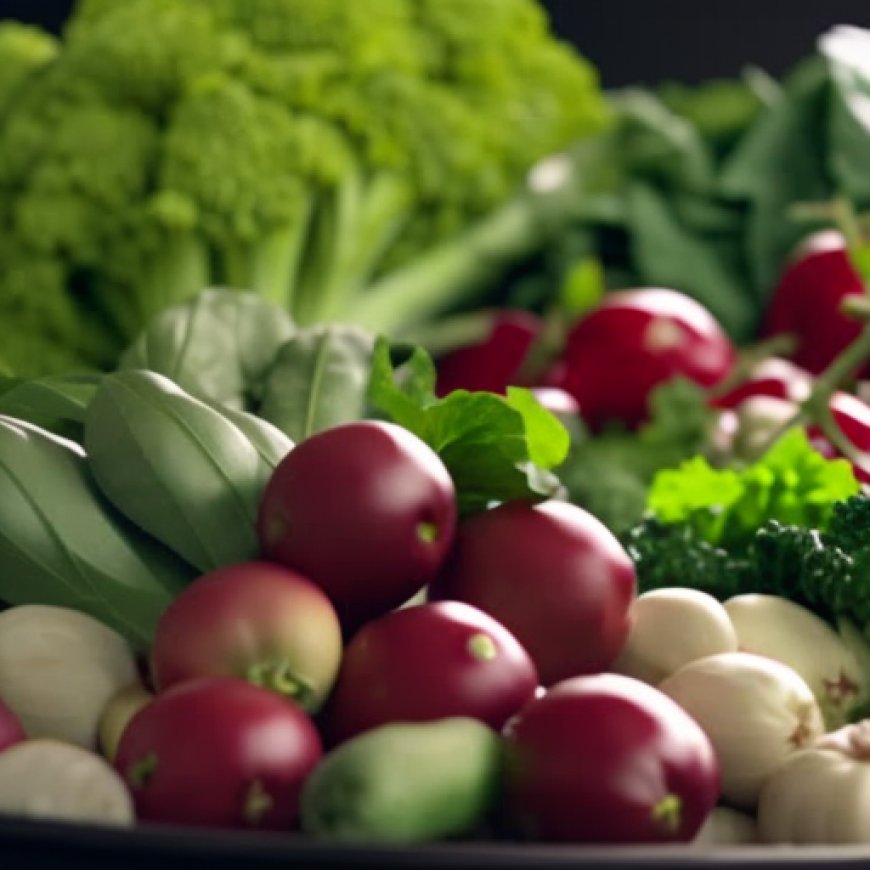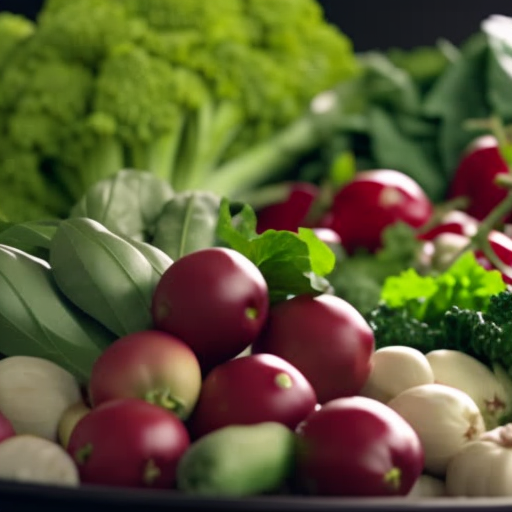Sustainable food systems should be established through new agricultural standards
Sustainable food systems should be established through new agricultural standards Innovation News Network


Helmholtz Centre for Environmental Research: Renegotiating EU Agricultural Trade Policies for Sustainable Food Systems
The Helmholtz Centre for Environmental Research has conducted a study that suggests EU agricultural trade policies should be renegotiated on a global scale to establish sustainable food systems. The research found that the cultivation of certain crops such as soya, palm oil, coffee, cocoa, sugar, and hazelnuts in their countries of origin outside of Europe is sustainable in only a minority of instances. This is due to practices such as deforestation, the use of valuable grasslands for plantations, and the application of harmful pesticides in cocoa and hazelnut cultivation.
The EU acknowledges its share of responsibility for preventing negative consequences for biodiversity and the climate. It is committed to the principle of Policy Coherence for Development and aims to achieve the UN Sustainable Development Goals (SDGs) within the EU while supporting developing countries in implementing them. The EU Green Deal and the Farm to Fork Strategy further demonstrate the EU Commission’s commitment to promoting the transformation towards sustainable food systems.
Proposing a New Approach to Agricultural Trade Policies
The research team proposes a new approach to navigating the complex agricultural trade policies between the EU and exporting countries. This approach analyzes the relevance and leverage effect of individual imported foods for both the EU and the country of origin. By considering the importance of trade for each agricultural product, measures can be taken to make these trade relations more sustainable.
Establishing the Importance of Trade for Each Agricultural Product
The research team’s new approach uses the ‘relevance’ criterion to describe the proportion of an agricultural product from a country of origin in total imports into the EU. The ‘leverage’ criterion determines how important the proportion of an agricultural product imported into the EU is for the country of origin in terms of the overall value chain or agricultural production. This allows for a comprehensive understanding of the importance of trade with the EU for each agricultural product and exporting country.
Soya, Palm Oil, Cocoa, and Coffee: Major Contributors to Deforestation
The researchers found that soya, palm oil, cocoa, and coffee are responsible for over 80% of the land deforested for EU product cultivation. They also identified specific groups of countries with significant export profiles that have a high influence on the EU’s trade policies. These include the MERCOSUR countries (Argentina, Brazil, Paraguay, and Uruguay) for soya, as well as Malaysia, Indonesia, Papua New Guinea, and various countries in Africa, Latin America, and Vietnam for palm oil, cocoa, and coffee. Focusing on these agricultural products when establishing sustainable trade relations could lead to significant progress in achieving greater sustainability in global food systems.
EU Supply Chain Law and Reducing Impact
The EU’s supply chain law plays a crucial role in enhancing transparency regarding the production conditions of traded goods, including the extent of deforestation or previous land usage. To reduce the impact of highly significant agricultural products like soya and palm oil, the EU can regulate demand by promoting sustainable livestock farming or advocating for a low-meat diet.
EU’s Influence and Supporting Sustainable Food Production Systems
While the EU has lost some of its influence in certain markets due to increased competition from countries like India and China, it remains essential for the EU to support countries in developing sustainable food production systems. This is crucial for implementing policy coherence globally and achieving the SDGs.
SDGs, Targets, and Indicators
SDG 2: Zero Hunger
– Target 2.3: By 2030, double the agricultural productivity and incomes of small-scale food producers, in particular women, indigenous peoples, family farmers, pastoralists, and fishers, including through secure and equal access to land, other productive resources and inputs, knowledge, financial services, markets, and opportunities for value addition and non-farm employment.
– Indicator 2.3.1: Volume of production per labor unit by classes of farming/pastoral/forestry enterprise size.
SDG 12: Responsible Consumption and Production
– Target 12.2: By 2030, achieve the sustainable management and efficient use of natural resources.
– Indicator 12.2.1: Material footprint, material footprint per capita, and material footprint per GDP.
SDG 15: Life on Land
– Target 15.2: By 2020, promote the implementation of sustainable management of all types of forests, halt deforestation, restore degraded forests, and substantially increase afforestation and reforestation globally.
– Indicator 15.2.1: Progress towards sustainable forest management.
SDG 17: Partnerships for the Goals
– Target 17.14: Enhance policy coherence for sustainable development.
– Indicator 17.14.1: Number of countries with mechanisms in place to enhance policy coherence of sustainable development.
Analysis
1. The SDGs addressed or connected to the issues highlighted in the article are SDG 2 (Zero Hunger), SDG 12 (Responsible Consumption and Production), SDG 15 (Life on Land), and SDG 17 (Partnerships for the Goals).
2. Specific targets under those SDGs based on the article’s content are:
– Target 2.3: By 2030, double the agricultural productivity and incomes of small-scale food producers.
– Target 12.2: By 2030, achieve the sustainable management and efficient use of natural resources.
– Target 15.2: By 2020, promote the implementation of sustainable management of all types of forests, halt deforestation, restore degraded forests, and substantially increase afforestation and reforestation globally.
– Target 17.14: Enhance policy coherence for sustainable development.
3. Indicators mentioned or implied in the article that can be used to measure progress towards the identified targets are:
– Indicator 2.3.1: Volume of production per labor unit by classes of farming/pastoral/forestry enterprise size.
– Indicator 12.2.1: Material footprint, material footprint per capita, and material footprint per GDP.
– Indicator 15.2.1: Progress towards sustainable forest management.
– Indicator 17.14.1: Number of countries with mechanisms in place to enhance policy coherence of sustainable development.
Table: SDGs, Targets, and Indicators
| SDGs | Targets | Indicators |
|---|---|---|
| SDG 2: Zero Hunger | Target 2.3: By 2030, double the agricultural productivity and incomes of small-scale food producers. | Indicator 2.3.1: Volume of production per labor unit by classes of farming/pastoral/forestry enterprise size. |
| SDG 12: Responsible Consumption and Production | Target 12.2: By 2030, achieve the sustainable management and efficient use of natural resources. | Indicator 12.2.1: Material footprint, material footprint per capita, and material footprint per GDP. |
| SDG 15: Life on Land | Target 15.2: By 2020, promote the implementation of sustainable management of all types of forests, halt deforestation, restore degraded forests, and substantially increase afforestation and reforestation globally. | Indicator 15.2.1: Progress towards sustainable forest management. |
| SDG 17: Partnerships for the Goals | Target 17.14: Enhance policy coherence for sustainable development. | Indicator 17.14.1: Number of countries with mechanisms in place to enhance policy coherence of sustainable development. |
Behold! This splendid article springs forth from the wellspring of knowledge, shaped by a wondrous proprietary AI technology that delved into a vast ocean of data, illuminating the path towards the Sustainable Development Goals. Remember that all rights are reserved by SDG Investors LLC, empowering us to champion progress together.
Source: innovationnewsnetwork.com

Join us, as fellow seekers of change, on a transformative journey at https://sdgtalks.ai/welcome, where you can become a member and actively contribute to shaping a brighter future.







